Raised garden beds are quite advantageous; they provide protection from pests, let you regulate the composition of your soil, are easier on your knees and back, and yield fewer weeds not only make your yard more functional but also visually appealing.
Raised beds are ideal for most perennials, but some may require extra room to stretch out. We’ll outline 27 perennials in this post that are ideal for raised beds.
1. Bleeding Heart

Botanical name: Lamprocapnos spectabilis
Sun Exposure: Full Sun to Partial Shade
Height: 1-3 feet tall
A traditional perennial in gardens is a bleeding heart. It is difficult not to grow them in your garden because of their striking heart-shaped, dripping flowers and deeply cut foliage. In the spring, the bleeding heart will blossom. Regretfully, when the temperature rises, the leaves do indeed disappear.
If you have a landscape that lacks spring colour and can tolerate gaps in blooming later in the season, a bleeding heart is a terrific addition. It is easy to include in any garden layout because it comes in pink and white variations.
2. Butterfly Bush

Botanical name: Buddleja davidii
Sun Exposure: Full sun
Height: 3-12 feet tall
One excellent way to get more butterflies or other pollinators into your garden is to plant a butterfly bush in your raised bed! While many butterfly bush kinds reach heights of up to two feet, others, like “Pugster,” don’t grow as large.
Beautiful, huge flowers in a variety of tints, such as blue, purple, white, pink, and bicolour, are produced by these flowering shrubs. Butterfly bushes prefer well-draining soil for optimal growth, and with occasional deadheading, they will bloom continuously throughout the season.
3. Daylily
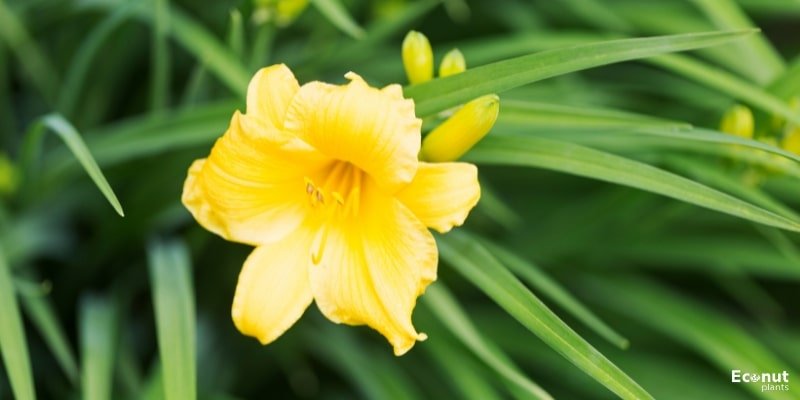
Botanical name: Hemerocallis spp.
Sun Exposure: Full sun
Height: 1-5 feet tall
Each kind of daylily has huge, star-shaped flowers that endure for approximately one day, although they differ greatly in colour. Long into the autumn, these blossoms will continue to be visually appealing atop stems rising above verdant, grass-like leaves.
Consider planting the ‘Stella d’Oro variety if you adore the way daylilies look but would like the blossoms to linger longer. For the whole summer, this cultivar reblooms.
When arranged on a border or as a huge mass planting, daylilies look lovely, whether planted alone or in groups. Use ornamental grasses with these perennials to create a sleek and contemporary raised bed.
4. Garden Phlox
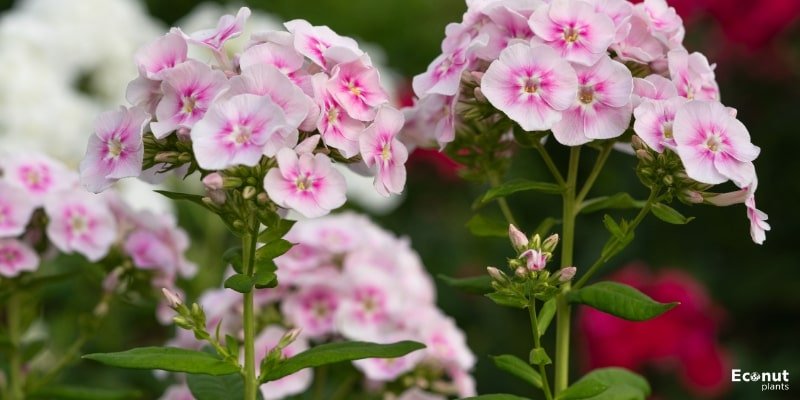
Botanical name: Phlox paniculata
Sun Exposure: Full sun to Partial Shade
Height: 2-4 feet tall
Phlox comes in a variety of forms, but this tall perennial garden variety has attractive flower clusters that are held aloft on strong, erect stalks. Although its blossoms are available in a variety of hues, white, pink, and purple are the most widely recognized. There are variegated leaves in addition to the light green ones.
When choosing plants for the back of raised beds or raised beds that receive somewhat more shade than others, garden phlox is a great option. Powdery mildew, which is more common in damp, shaded regions, is a problem for garden phlox. To avoid this fungal disease, make sure there is enough ventilation.
5. Japanese Painted Fern

Botanical name: Athyrium niponicum
Sun Exposure: Full sun to Partial Shade
Height: 1-2 feet tall
Japanese-painted ferns are the ideal plants for your shaded gardens if you want to add some texture. The fronds of these lovely ferns have a variegated appearance due to their nearly silvery green colour and hints of crimson in the stems.
This fern may naturally establish itself in your yard, even if it grows slowly. It does this by spreading through rhizomes over time.
Raised beds are a great place for Japanese-painted ferns. They can be used as a mid-sized plant or as a front-border plant, depending on what else you are growing. This lovely painted fern would look great with goatsbeard and hosta.
6. Montauk Daisy

Botanical name: Nipponanthemum nipponicum
Sun Exposure: Full sun
Height: 2-3 feet tall
Pretty daisies that bloom in late summer and early fall are called Montauk daisies, or Nippon daisies. The foliage of this plant has a striking dark green colour before the daisies open. It will develop in a lovely, rounded form, and late spring pruning will help it expand even more.
As you get your gardens ready for autumn, fill raised beds tastefully with Montauk daisies. Once they bloom, these perennials tend to collapse. Pruning in the spring will strengthen these stems and prevent them from flopping, as was previously described.
7. Perennial Salvia
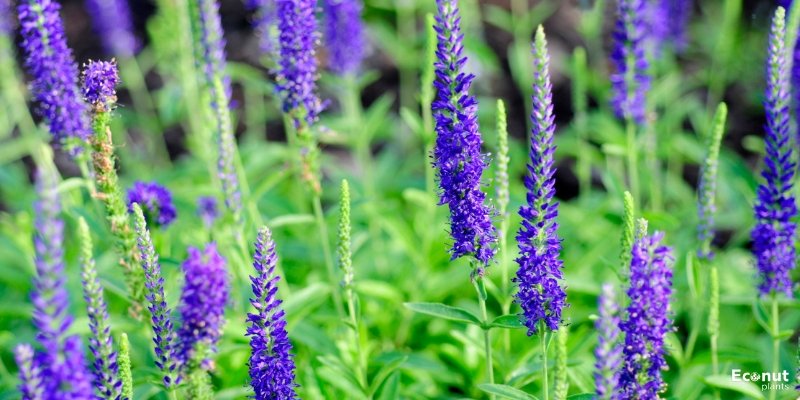
Botanical name: Salvia spp.
Sun Exposure: Full sun
Height: 1-4 feet tall
A dependable perennial that can enhance the appearance of your raised beds and draw in a variety of pollinators is perennial salvia. This plant has lance-shaped, dark green leaves. The flowers have rich purple spikes. If you deadhead the spent flowers, you will be rewarded with another set of blooming.
Make sure your raised bed is large enough for perennial salvia since they can reach up to 4 feet in height and width. If so, a row of perennial salvia would make an eye-catching arrangement.
8. Siberian Bugloss
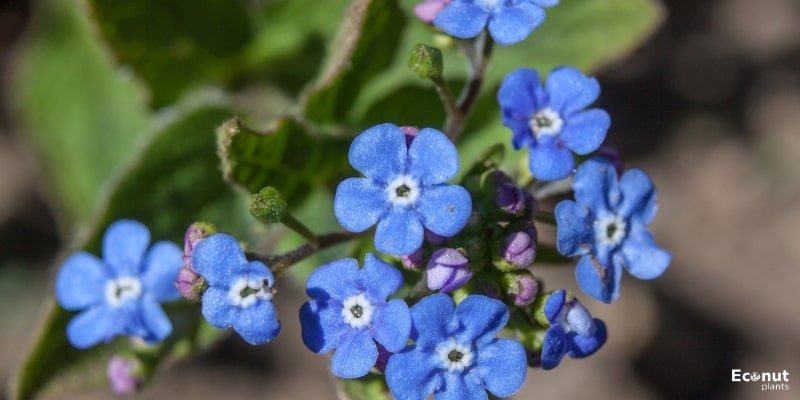
Botanical name: Brunerra spp.
Sun Exposure: Full sun to Partial Shade
Height: 1-2 feet tall
The perennial Siberian bugloss, also known as brunerra, blooms in the spring and has lovely heart-shaped leaves topped with tiny blue flowers. These are huge leaves with varying degrees of white variegation depending on the cultivar.
This perennial is ideal for an elevated bed because it prefers well-draining soil. Siberian bugloss blossoms in the spring, but throughout the season, the foliage will always be interesting. For a rich appearance, place Brunerra at the front edge of your raised bed.
9. Yarrow

Botanical name: Achillea millefolium
Sun Exposure: Full sun
Height: 2-3 feet tall
If you’re searching for a hardy yet elegant plant, yarrow is a fantastic choice. Though it has been sufficiently domesticated, this plant still thrives as a wildflower and can be grown as a perennial in our gardens.
Mounded leaves resembling silver ferns that grow closer to the ground are found on yarrow. Summertime brings with it bunches of flowers that bloom throughout the autumn. There are pink, yellow, orange, and white hues for these flowers.
A wonderful plant for a butterfly garden, yarrow will draw pollinators. Yarrow flowers are a low-maintenance staple for any cutting garden, especially if it is raised. They keep well in a vase for a considerable amount of time.
10. Coneflower
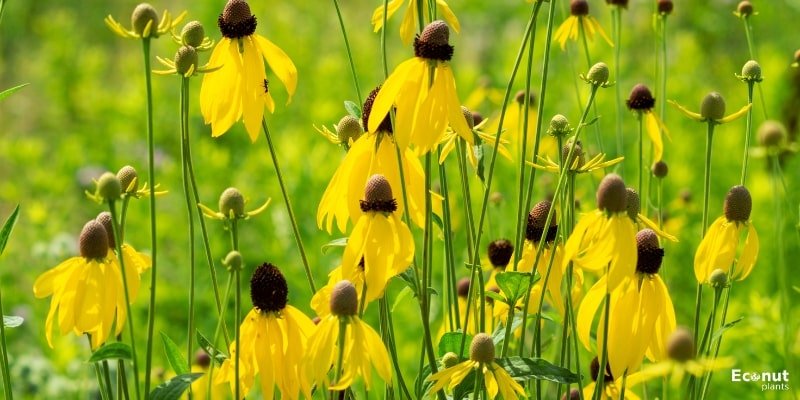
Botanical name: Echinacea spp.
Sun Exposure: Full sun
Height: 2-4 feet tall
This well-liked perennial looks fantastic in raised beds, in addition to being ideal for your flower beds. Coneflowers produce daisy-like flowers that come in a variety of colours and can grow up to 4 feet tall.
For a luxuriant show, plant these perennials by themselves or include them in your vegetable gardens. Pollinators of various kinds are drawn to coneflowers, but birds particularly adore them. To stop the self-seeding, deadhead the wasted blossoms. To feed the birds in the autumn, think about leaving a few seed heads outside.
11. Blue Spruce Stonecrop
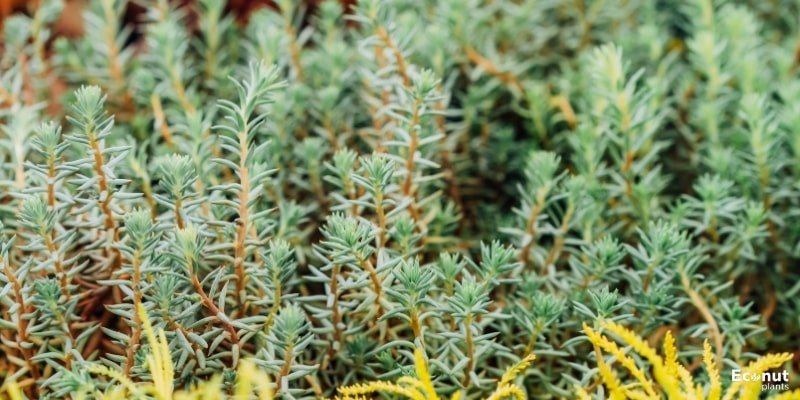
Botanical name: Sedum reflexum
Sun Exposure: Full sun to partial Shade
Height: 6-8 inches tall
This is a highly sought-after sedum cultivar, and rightfully so. The gorgeous, short, creeping blue succulent requires little maintenance. This stonecrop will provide clusters of tiny yellow flowers in the summer, but I think the blue foliage steals the show.
When branches of a blue spruce stonecrop cascade over the edges of an elevated bed, it creates an amazing visual display. This may be the low-maintenance plant you’ve been searching for for raised beds. The blue spruce stonecrop thrives on low-fertility; dry soils and is incredibly forgiving.
12. Asiatic Lily

Botanical name: Lilium asiatica
Sun Exposure: Full sun to partial Shade
Height: 2-5 Feet tall
Raised beds can benefit from the vibrant colours that Asian lilies can contribute. Since these perennial bulbs dislike growing in excessively moist soil, they will thrive in raised beds.
The colours of Asiatic lilies are diverse and include white, pink, orange, yellow, bicoloured, and more. Depending on the species you select, you will have different heights; therefore, there are a lot of ways you may arrange these lilies in your beds.
Since Asian lilies are poisonous to pets, avoid planting them in areas where your family’s four-legged members could accidentally eat them. While cutting flowers for your vase arrangements, let the plant’s foliage and stems naturally fade. By feeding the lily bulb over the winter, you can encourage bigger blooms the following year.
13. Black-Eyed Susan

Botanical name: Rudbeckia hirta
Sun Exposure: Full sun
Height: 2-3 Feet wide
Consider including black-eyed Susans in your yard as a traditional garden accent. These evergreen powerhouses yield vivid yellow blooms with rich brown centers. All season long, the black-eyed Susan’s foliage will continue to be very appealing. To promote a second batch of blooms, deadhead the spent black-eyed Susans.
You can pair black-eyed Susan’s well with almost any other plant. Leave the seed heads on the plant if you want to draw and feed birds in the winter. Birds love to chew on the seed heads of this plant.
14. Coral Bells

Botanical name: Heuchera spp.
Sun Exposure: Full sun to Partial Shade
Height: 1-2 Feet tall
Coral bells are really interesting plants that are mostly grown for their foliage. Due to hybridization, this perennial has several diverse types, with foliage ranging from lime green to almost black.
The foliage is beautifully rounded and lobed. Although the blooms are modest, they can give your gardens a whimsical touch and a subtle pop of colour.
Coral bells are a versatile plant for raised beds since they thrive in both sun and shade. If you want your beds to look tidier, remove the deadheads from the flowers. If not, allow them to mature on your plant.
15. Fountain Grass

Botanical name: Heuchera spp.
Sun Exposure: Full sun to Partial Shade
Height: 1-2 Feet tall
Every garden, including your raised bed, benefits from the graceful addition of ornamental grasses. Whatever flowering perennials you decide to grow in your raised bed will look lovely against this arching grass. Very little upkeep is required for fountain grass.
It takes very little watering and no extra upkeep to keep this perennial grass looking good. To enjoy the dried stalks during the winter, you can wait until spring or trim back the grass in the autumn.
Little Bunny, a fountain grass with the same lovely qualities but a maximum height of two feet, is a good option if you’d like something smaller.
16. Hosta
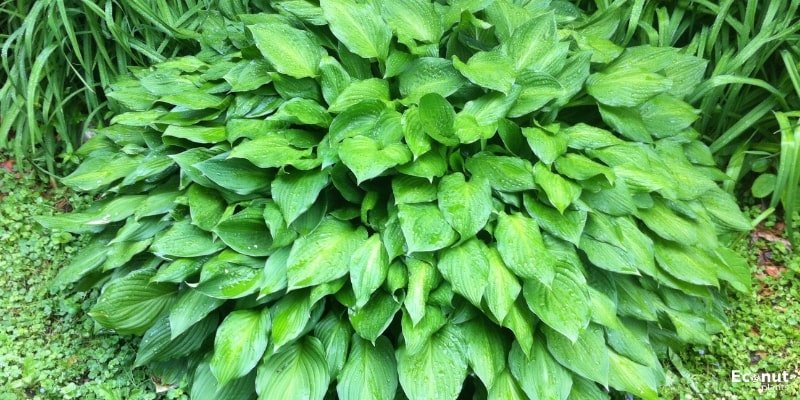
Botanical name: Hosta spp.
Sun Exposure: Full sun to Partial Shade
Height: 1-2 Feet wide
Hostas are an extremely diverse group of plants that come in a variety of sizes and colours to suit almost any gardening situation. These plants, regardless of size, are mainly grown for their leaves, though a few yield lovely flowers that look great in your garden or a vase of cut flowers.
Hostas come in blue, dark green, lime green, and variegated hues and they can grow up to three feet tall. Most of the flowers are either purple or white. You may use a variety like “Blue Mouse Ears” for the front border of your raised gardens, or “Big Daddy” if you want to cover a lot of ground.
17. Peony
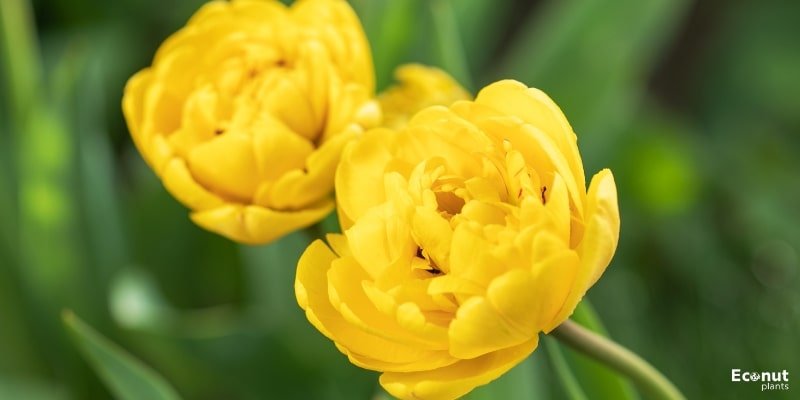
Botanical name: Paeonia lactiflora
Sun Exposure: Full sun to Partial Shade
Height: 2-3 Feet tall
Raised beds work well for cutting gardens, and peonies are a great accent. These perennials bloom in late April and produce incredibly enormous, fragrant flowers.
Pastel hues and vivid hues like deep crimson are among the many colours available for these blooms. The foliage remains mounded and lovely all season long after the flowers have ceased flowering.
If the weight of the blossoms is too much for your peonies to support, you might need to use a peony ring. For long-lasting blooms in your beds throughout the season, combine your peonies with plants that bloom in the middle of summer, such as coneflowers.
18. Shasta Daisy
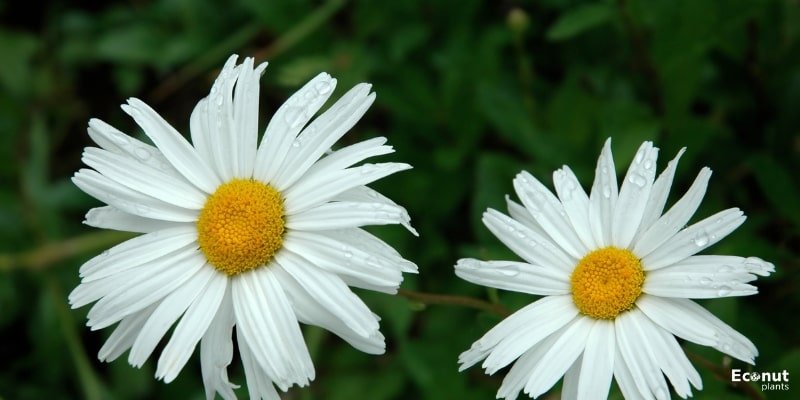
Botanical name: Leucanthemum × superbum
Sun Exposure: Full sun to Partial Shade
Height: 1-3 Feet tall
Shasta daisies are a must-plant in your raised bed if you adore daisies. These gorgeous and dependable summer bloomers are real daisies. These daisies will be covered in white daisies with brilliant yellow centers, and they can grow up to three feet tall. When the flowers start to fade, remove the deadheads to promote new blooming.
Coneflowers or black-eyed susans go well with daisies to create a raised bed full of summertime blossoms. If you want to attract pollinators to your garden, Shasta daisies are an absolute necessity.
19. Silver Mound Artemisia
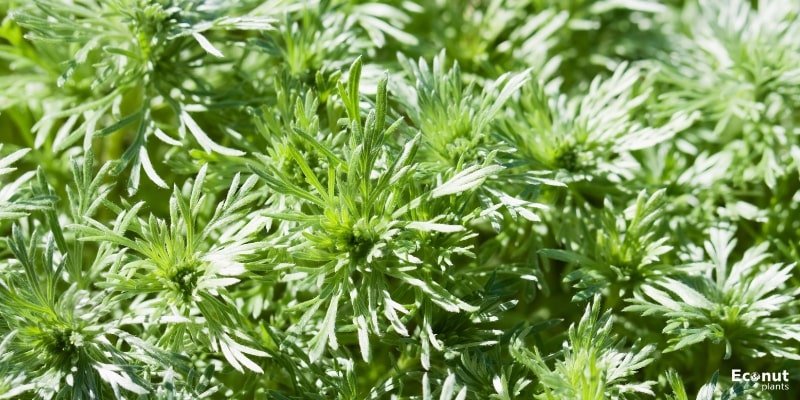
Botanical name: Artemisia schmidtiana ‘Silver Mound’
Sun Exposure: Full sun to Partial Shade
Height: 1-3 Feet wide
This elegant shrub with silvery leaves is ideal for raised beds. “Silver Mound,” which is mainly grown for its leaves, blooms tiny and golden in the summer. As suggested by its name, this plant grows into a beautiful mounded form that works well as a border plant or raised bed filler.
The sun and heat are highly beneficial to the low-maintenance silver mound plant. To highlight your herbs, annuals, or other flowering perennials, add this plant to your raised beds.
20. Tickseed

Botanical name: Coreopsis spp.
Sun Exposure: Full sun
Height: 1-2 Feet tall
Coreopsis, another name for tickseed, is a perennial that blooms profusely. The fern-like leaves are covered in blooms, which are usually yellow, orange, or red. Using your garden shears, you can give the entire plant a haircut as the initial set of flowers starts to fade. This will help you get flowers well into autumn by stimulating a second wave of blooms.
To add colour to your raised beds that will last throughout the season, plant tickseed. Deadheading is the only maintenance required for this easy-to-care-for plant if you want to encourage a second bloom. Consider growing it with taller, sun-loving perennials like Shasta daisies.
21. Roses

Botanical name: Rosa spp.
Sun Exposure: Full sun
Height: 1-20 Feet tall
If your flower beds don’t get enough sun, planting roses in raised garden beds is a great way to grow roses. Roses require frequent watering and prefer full light. It’s time to plant some roses if it fits into your schedule!
Roses are exquisite flowers; nothing compares to witnessing one reach its full splendour. Roses come in a variety of shapes and hues. For novice rose gardeners, knockout roses are excellent. These roses will give you excellent service and bloom all summer.
Roses can fill a full raised bed, or you can use them as a specimen planted with other perennials that thrive in the sun. Your roses would look stunning with complementary plantings of yarrow, daisies, and lavender.
22. Lenten Rose
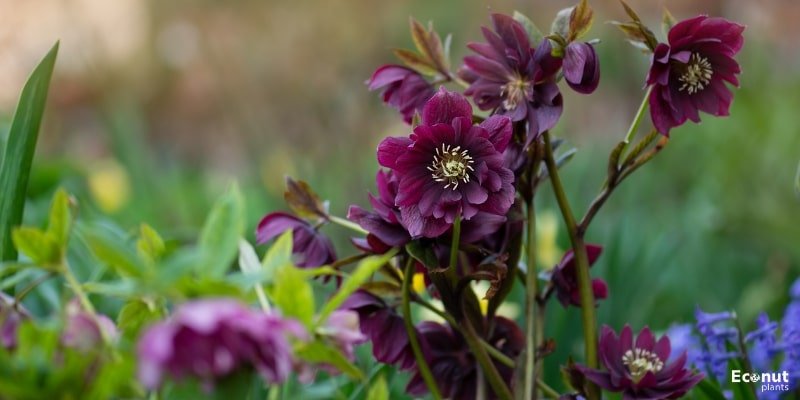
Botanical name: Helleborus spp.
Sun Exposure: Full sun
Height: 1-2 Feet tall
One type of semi-evergreen perennial is called the Lenten rose. In a garden, these intriguing blooms often emerge first; however, some types bloom in the middle to late winter. The remaining plants will blossom in the spring, giving rise to intriguing flowers that range in colour from white to black. Large, eye-catching leaves that are visually appealing all year round.
The Lenten rose benefits from some sun in the milder winter months but prefers shade in the summer. In your shaded raised beds, plant Lenten roses. For continuous season-long blooms in your gardens, combine these perennials with plants that bloom later.
23. Goat’s Beard
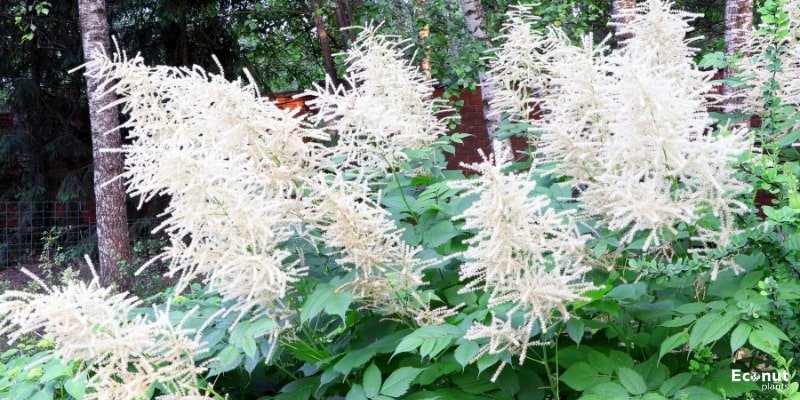
Botanical name: Aruncus dioicus
Sun Exposure: Full sun to Partial Shade
Height: 4-6 Feet tall
A wonderful perennial for the center of an elevated bed is a goat’s beard. When buying a new plant, consider its size, since some types can grow to be rather enormous. In any case, these plants produce tiny white blooms in enormous white plumes. The leaves are oval-shaped and have a deep green colour.
Dry soil does not support the growth of goat beards. The foliage will start to wither if the soil dries out too much. After letting the soil get a little dry, water it as needed. Use the spent flowers in vase arrangements by deadheading them. This will assist in preventing the spread of your goat’s beard.
24. ‘Autumn Joy’ Stonecrop

Botanical name: Sedum telephium ‘Autumn Joy’
Sun Exposure: Full sun
Height: 1-2 Feet tall
This popular stonecrop type develops into a stunning pile of succulent leaves. ‘Autumn Joy’ develops pinkish-red flower tufts atop the foliage in late summer and early autumn. These flowers will dry and survive through the winter, adding much-needed winter interest if you don’t deadhead them.
Stonecrops prefer full light and a dry environment. Should you place your beautiful raised bed under these conditions, I strongly recommend planting a stonecrop called “Autumn Joy.” This perennial grows nicely and looks better every year, with almost no maintenance required.
25. Blue Fescue
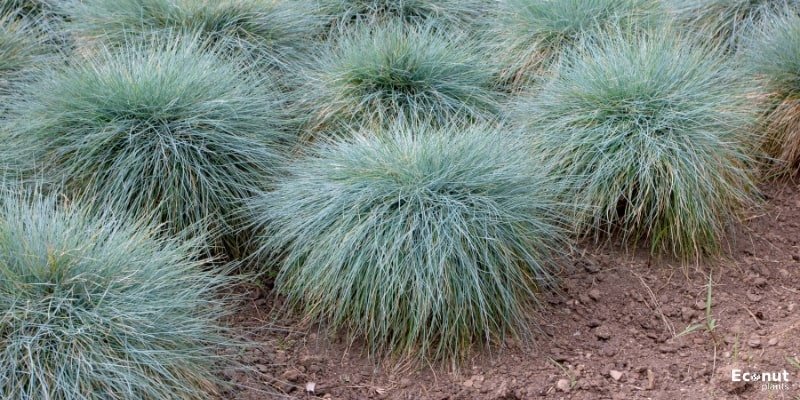
Botanical name: Festuca glauca
Sun Exposure: Full sun to Partial Shade
Height: 1-2 Feet wide
A low-growing ornamental grass that makes a great border plant is blue fescue. The colour of the grass blades is wonderful. The flowers produced by this plant resemble those of other decorative grasses. These plumes will initially be blue, but as they get older, they will turn a gorgeous tan.
Blue fescue is a hardy and extremely drought-tolerant plant. The gentle blue blades of grass provide a wonderful combination with other perennials. In an elevated bed, consider combining them with daylilies or other perennials that enjoy the sun.
26. Foam Flower
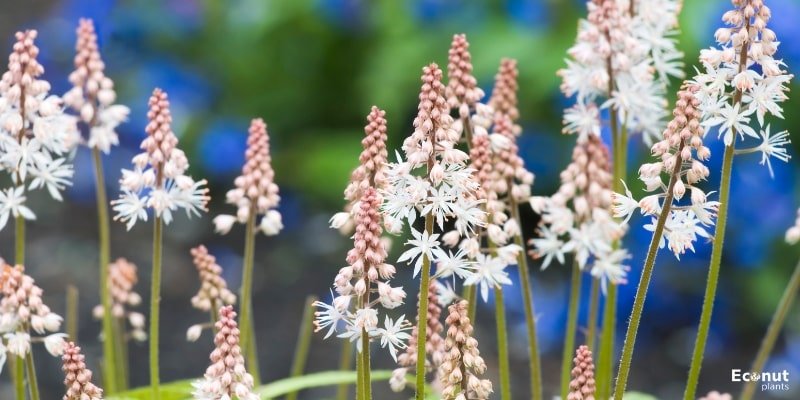
Botanical name: Tiarella cordifolia
Sun Exposure: Full sun to Partial Shade
Height: 1 foot tall
The attractive shade-loving perennial foam flower spreads using its stolons, or horizontal or underground branches, which are also referred to as runners. The flowers are creamy-white with fascinating frothy spikes. This plant is commonly employed as a ground cover because of its wonderful spreading habit.
Foamflower is an excellent plant choice if you have an elevated bed in partial shade and want something small that will take up a good amount of area. Although the foliage is very appealing and lush throughout the entire season, the blooms will appear in the spring.
27. Lavender
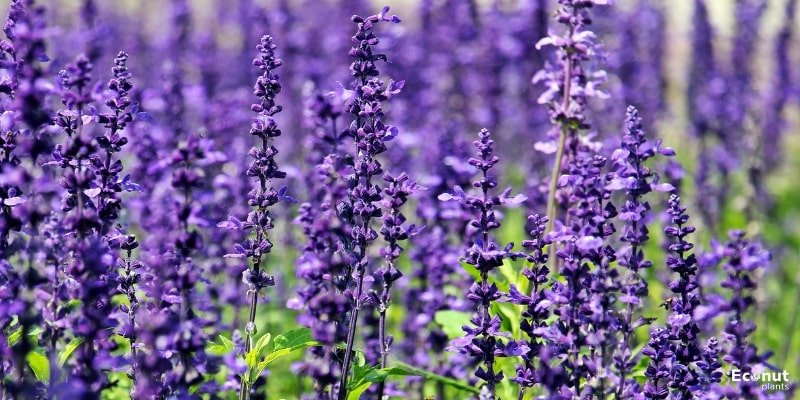
Botanical name: Lavandula angustifolia
Sun Exposure: Full sun
Height: 1-2 feet tall
Lavender is a great addition to both perennial and vegetable gardens. This plant is well-known for both its aromatherapy benefits and its stunning purple blossoms that emerge above silvery leaves. These lovely perennials may grow as tall as two feet, depending on the variety you choose.
Due to their preference for well-draining soil, lavender plants thrive on raised beds. The soil on raised beds is often well-draining. You can add horticulture sand or pea gravel to adjust it if necessary. In your perennial gardens, combine lavender with salvia or coneflowers.
Conclusion
Make sure to start with high-quality potting soil if you want to have success with your raised beds. Choosing plants that are appropriate for your growth conditions is the second-most crucial factor. This covers the amount of sunlight you need, your growing zone, and your capacity to keep the right amount of soil moisture.
Plant what you love, as I always say. As long as the plants in your garden provide you with joy, there is no right or wrong plant. Cheers to your successful gardening!

